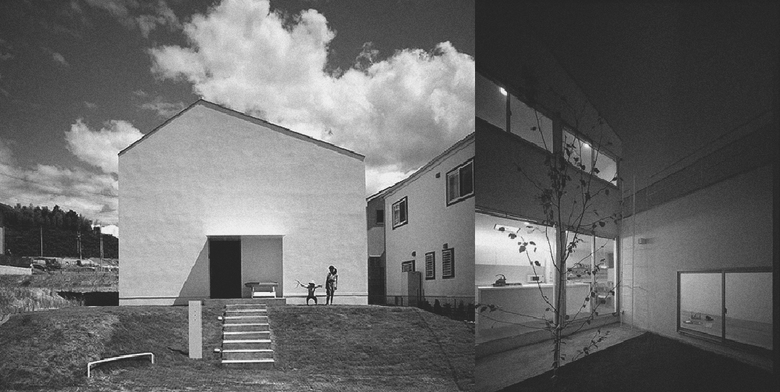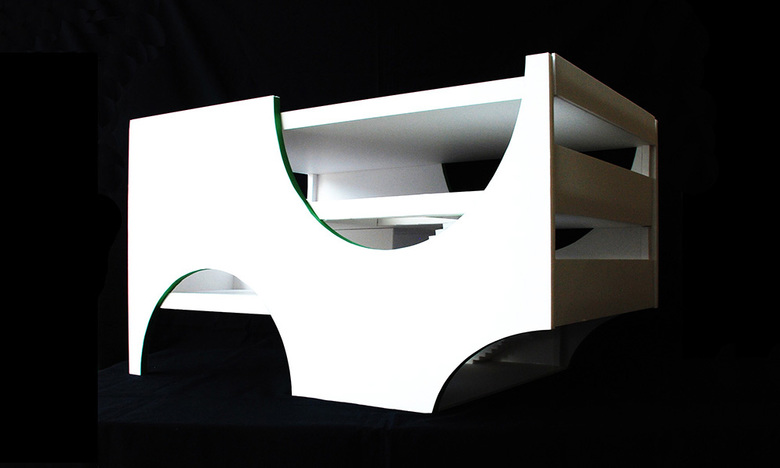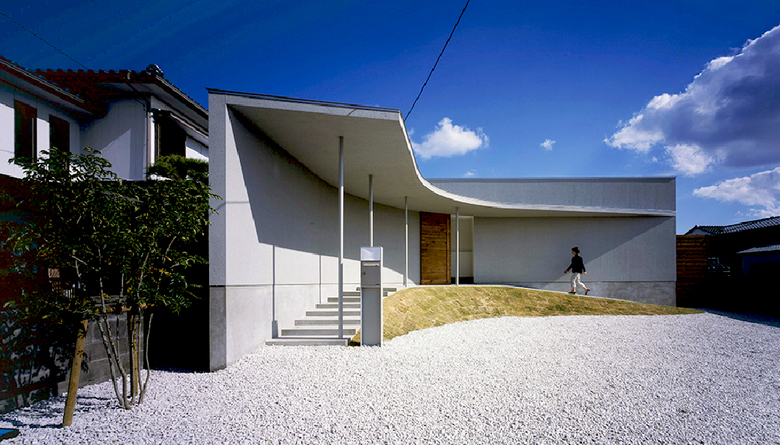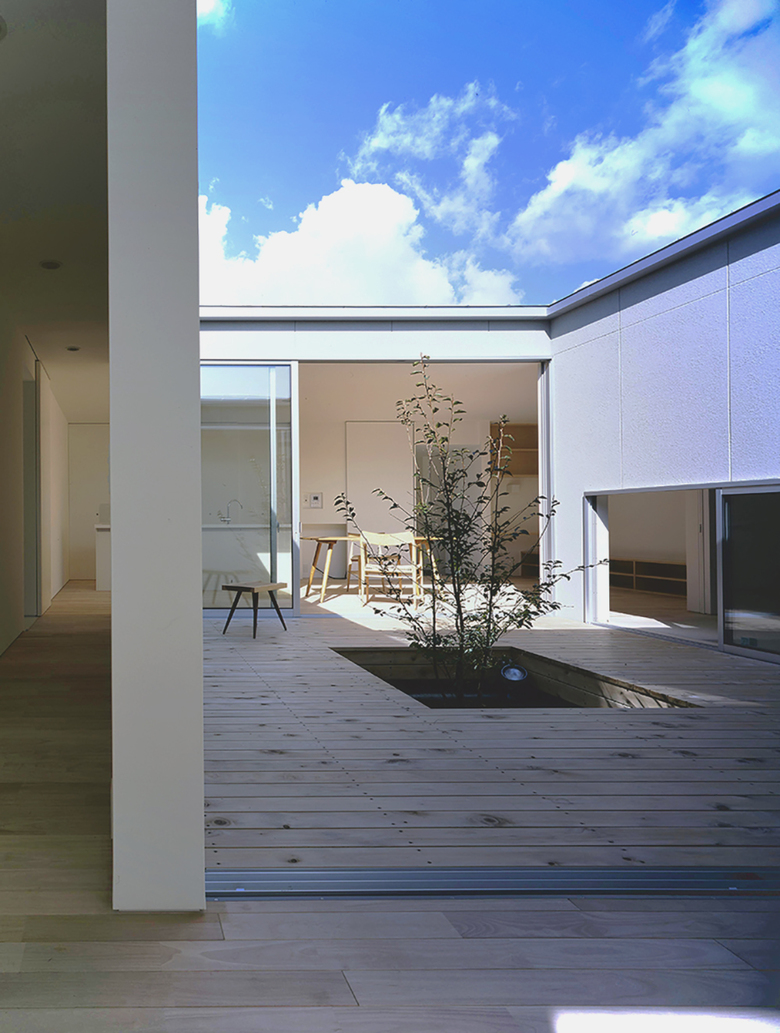Studio Visit: Horibe Associates Architect's Office
Yuna Yagi
3. December 2012
Photograph of Horibe Associates office courtesy of the architect
Japan-Architects.com’s Yuna Yagi recently visited Horibe Associates Architect's Office in Takatsuki, Osaka Prefecture. Yuna’s conversation with Ms. Horibe touched on everything from what it’s like to be one of relatively few female architects in Japan and her approach to design, to the story of how she started up her firm and the direction of her most recent work.
Japan-Architects.com’s Yuna Yagi recently visited Horibe Associates Architect's Office in Takatsuki, Osaka Prefecture. Sliding glass doors comprise the entire façade of the storefront office, revealing an interior wall on one side and an area for meeting with clients on the other. The atmosphere is compact and cozy. Small lots are the norm in Japan’s urban areas, and spacious offices rare, but principal Naoko Horibe has clearly put her own modest space to excellent use.
Inside, concrete floors and white stucco walls compose a cool square box accented by simple built-in furniture and waist-high walls in natural linden plywood. The office is boldly divided into two sections, with a table for meeting with clients and bookshelves topped with models and samples on the right side, and computers surrounded by lots of papers on the left. Waist-high walls enclosing the work area provide some privacy from passersby but still let in natural light. In the lower section of this wall is a small square window. Ms. Horibe says she included it so her dog could poke its head through (photo in right column). Her playful approach to design is appealing!
Yuna’s conversation with Ms. Horibe touched on everything from what it’s like to be one of the relatively few female architects in Japan and her approach to design, to the story of how she started up her firm and the direction of her most recent work.
Photograph of Horibe Associates office courtesy of the architect
What was the catalyst for you to start your own firm?I originally wanted to work as an independent architect, but in Japan it’s hard for women to do that after getting married and having children. I decided to put off starting my own firm until it was necessary.
Photograph by Yuna Yagi
Where did you work before you went independent?I worked at three different architecture offices before going independent in 2003. My first project was my own home. By using it as a model home to show to many different people, I gradually built up a client base.
In 2008, my husband Keiichi quit his corporate job and joined the firm as an architect. Since we were taking on more and more work, we hired additional staff at the same time. I’d been working out of our home but with staff that became impossible, so we found a space for the office located between our home and our children’s school.
Photographs of House in Hatsugano by Kaori Ichikawa
How did you decide on a storefront space?I feel that people who are not architects have comparatively low awareness about what architectural design work involves. I chose a storefront office because I thought, if I want my activities to be strongly rooted in the local community, I should open up the process to the community, if even a little bit. Although I ran out of time and wasn’t able to do so in the end, I had actually wanted open up the first floor as a café.
Photograph by Yuna Yagi
What is it like to be a woman architect in Japan?I don’t think gender has anything to do with architecture as a whole, but I do flatter myself as far as thinking that I can offer more realistic residential designs because of my experience of being a mother and raising children. However, I’m careful not to push my own subjective view of things onto clients.
It depends on the client, but quite a few do say they prefer having a female architect.
Photograph by Yuna Yagi
Are there any architects you particularly like or are interested in?There are many, but I especially like the spaces of Edward Killingsworth and John Pawson. I also try to attend as many open houses as I can. Each one teaches me something.
Rendering of W English school courtesy of the architect
What have you been working on lately?Although we do a lot of residential design, we’re currently working on an English school for kids. The school had originally been run out of a kindergarten, but because the number of students has been growing, a new three-story building is being built just for the school. The lot is located in the former castle district of town, oriented toward the site of an old castle keep that has been preserved as a park. The lush greenery of the park could be seen from the part of the site that had long been used as a parking lot. I made that existing view a part of the façade of the new building via large windows. The concept was to pass on the landscape to the community as a memory of the land. By doing so, the “soft” infrastructure of the English school together with the “hard” presence of the building itself is sublimated into a sustainable presence that the community accepts. The design of the façade itself becomes trivial. The large windows also reveal the interior of the building, which I thought would be a good way to convey the fun atmosphere of kids studying at the school to passersby.
Model of W English school courtesy of the architect
The large windows also reveal the interior of the building, which I thought would be a good way to convey to passersby the fun atmosphere of kids studying at the school. The parking lot includes a “symbol tree” that can be used as a center for events or decorated at Christmas.
The parking lot is designed so cars can drive all the way through to the other side. Lots of mothers drop off and pick up their kids by car, but many of them don’t like parking. I thought it would be more convenient if they could drive through. There are also a lot of kids around, and I thought this system would allow for clearer, safer pick up and for drop-off rules to be established.
The glassed-in room on the first floor is like a little library with lots of bookshelves, where kids and parents can relax and enjoy themselves while they are waiting for classes.
Photograph of House in Naruto by Kaori Ichikawa
Photograph of House in Naruto by Kaori Ichikawa
What is important to you when you design something?As the number of lines I draw increases, so does the number of things I’m trying to do. I strive for simplicity, even if it means taking away just one of those lines.
I also try to avoid revealing the floor plan in the exterior of the structure. For instance, if it’s a residence, I don’t want people to know where the bath or the kitchen is just by looking at the house, but instead to get a surprise when they step inside. I aim for simple exteriors that draw the eye when seen from a distance.
Photograph of House in Kamoshima by Kaori Ichikawa
Photograph of House in Kamoshima by Kaori Ichikawa
What are your plans for the future?I’m working on an apartment complex right now. I do like designing individual homes, but I’d like to try a wider range of design work in the future, as I’ve started to do.
Related articles
-
Kunstsilo
3 weeks ago
-
Architecture as a Craft
1 month ago
-
‘Working from the inside out’
1 month ago
-
Vessel to Reopen with Safety Netting
2 months ago











